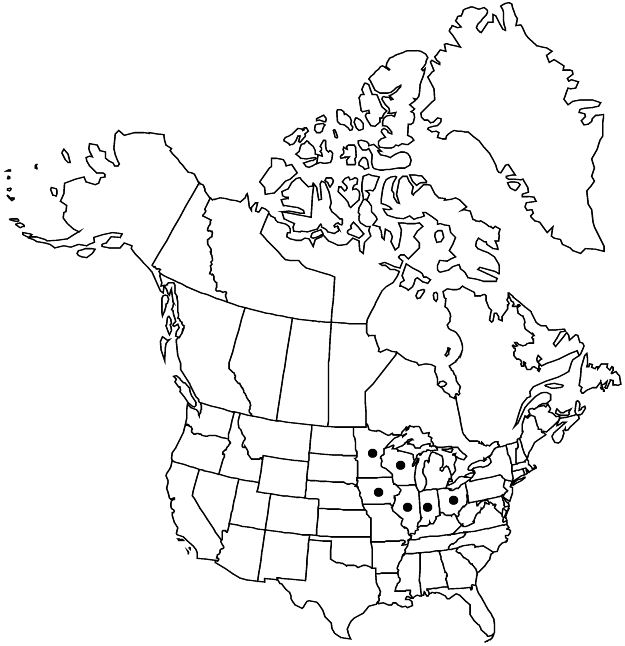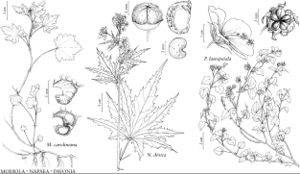Difference between revisions of "Napaea dioica"
Sp. Pl. 2: 686. 1753.
imported>Volume Importer |
imported>Volume Importer |
||
| Line 56: | Line 56: | ||
|publication year=1753 | |publication year=1753 | ||
|special status=Endemic;Illustrated | |special status=Endemic;Illustrated | ||
| − | |source xml=https:// | + | |source xml=https://bitbucket.org/aafc-mbb/fna-data-curation/src/2e0870ddd59836b60bcf96646a41e87ea5a5943a/coarse_grained_fna_xml/V6/V6_554.xml |
|subfamily=Malvaceae subfam. Malvoideae | |subfamily=Malvaceae subfam. Malvoideae | ||
|genus=Napaea | |genus=Napaea | ||
Latest revision as of 22:22, 5 November 2020
Plants subscapose, 1–2.2(–3) m, from stout taproot. Leaves at base of plant largest and with longest petioles, progressively smaller and shorter-petioled distally, passing into bracts of inflorescence; petiole to 1.2 m (at base of plant); blade deeply 5–9(–11)-lobed, 5–50 × 7–65 cm, mostly somewhat wider than long, lobe apices acute or, especially on distal leaves, acuminate, surfaces simple- or stellate-hairy (especially abaxially). Flowers: calyx lobes 1.5–2 mm, shorter than tube; petals 5–10 mm; staminate flowers with 16–20 stamens, carpels 0; pistillate flowers with column of abortive stamens. Mericarps 4–5 mm, rugose abaxially, especially near margins, and often laterally when mature, glabrous. Seeds 3–4 mm. 2n = 30.
Phenology: Flowering early–mid summer(–early fall).
Habitat: Stream banks, flood plains, meadows and thickets, roadsides, alkaline soil
Elevation: 200–400 m
Distribution

Ill., Ind., Iowa, Minn., Ohio, Wis.
Discussion
Napaea dioica is the only dioecious member of Malvoideae native in the Western Hemisphere. Reports of glade mallow in areas outside its natural range derive from confusion between it and Sida hermaphrodita (for example, Virginia; H. H. Iltis 1963) or from garden escapes (for example, Vermont; J. P. Brown 1941).
The degree, distribution, and type of indument are variable. Forma stellata Fassett includes plants with mostly stellate hairs.
Napaea dioica is in the Center for Plant Conservation’s National Collection of Endangered Plants.
Selected References
None.
